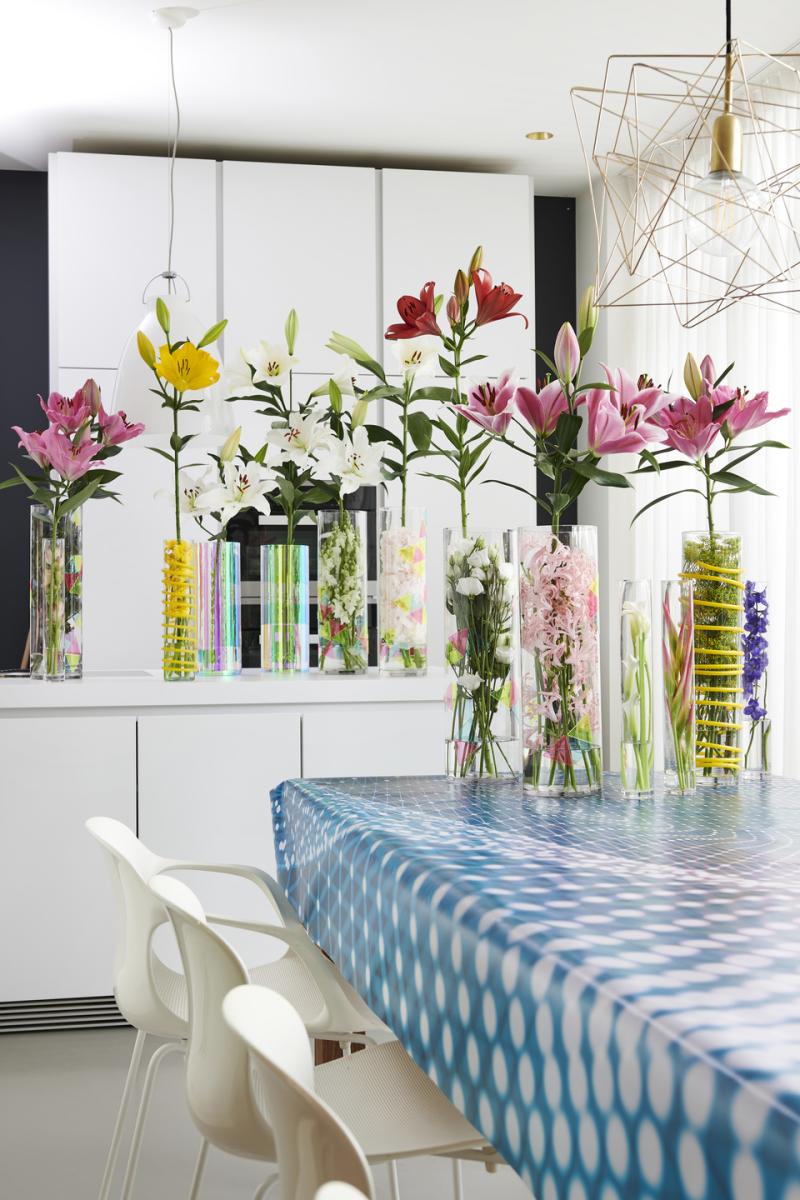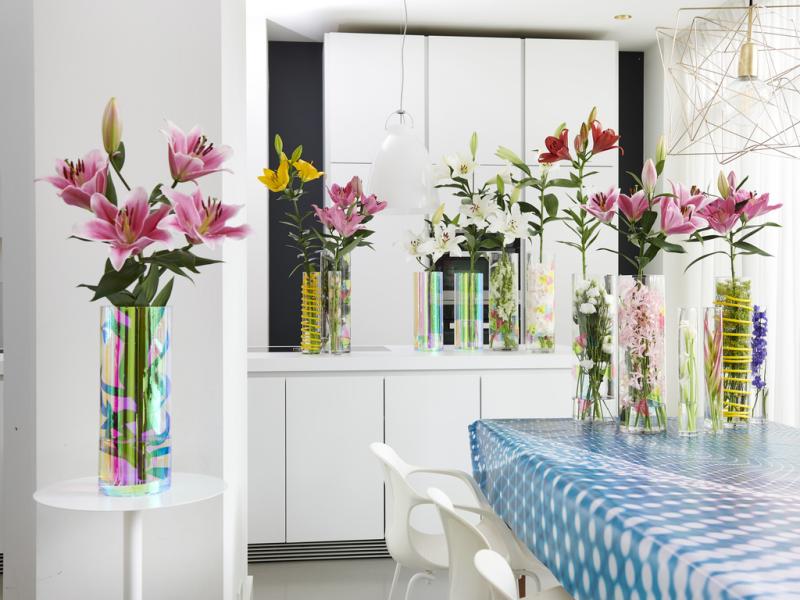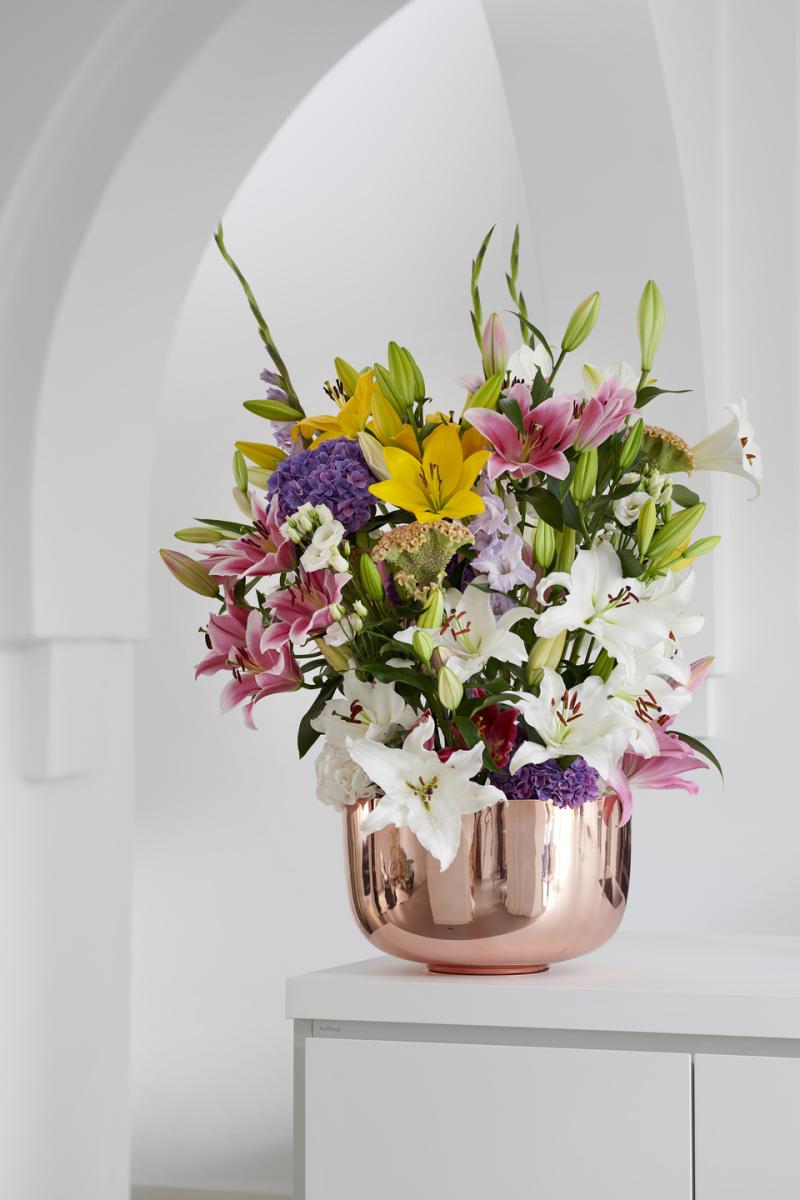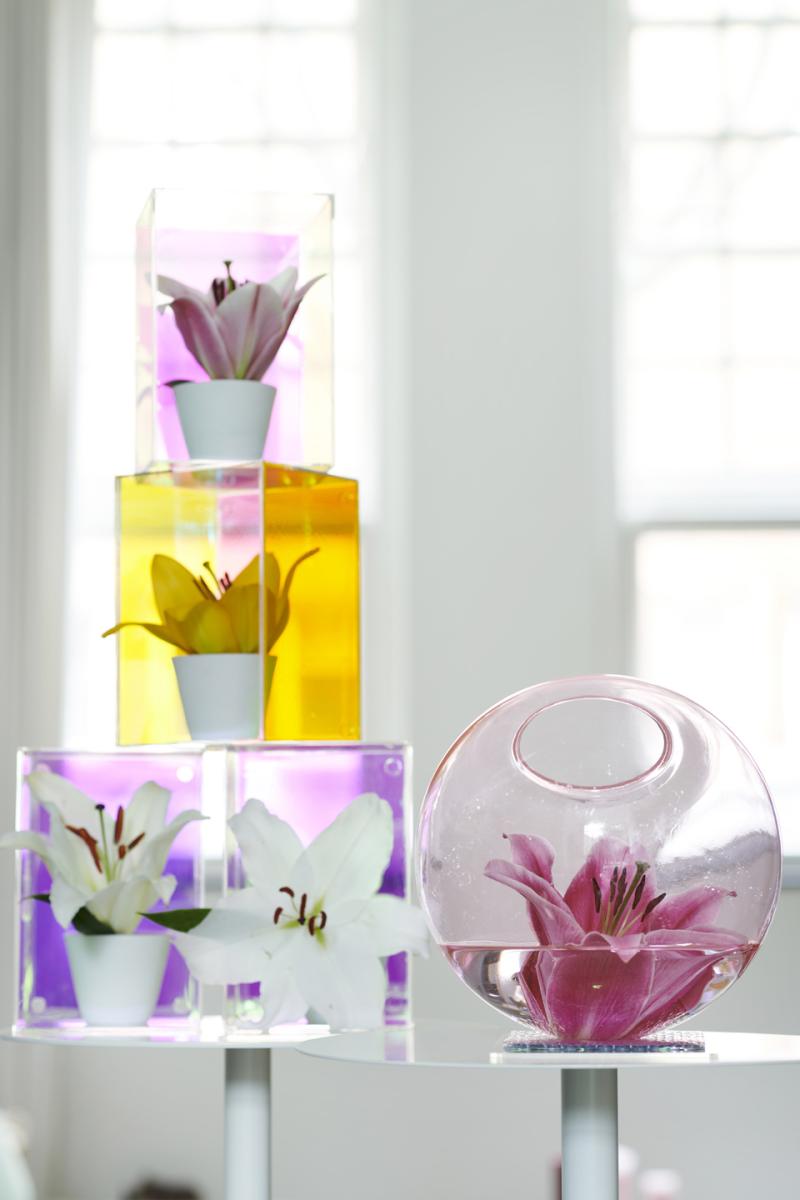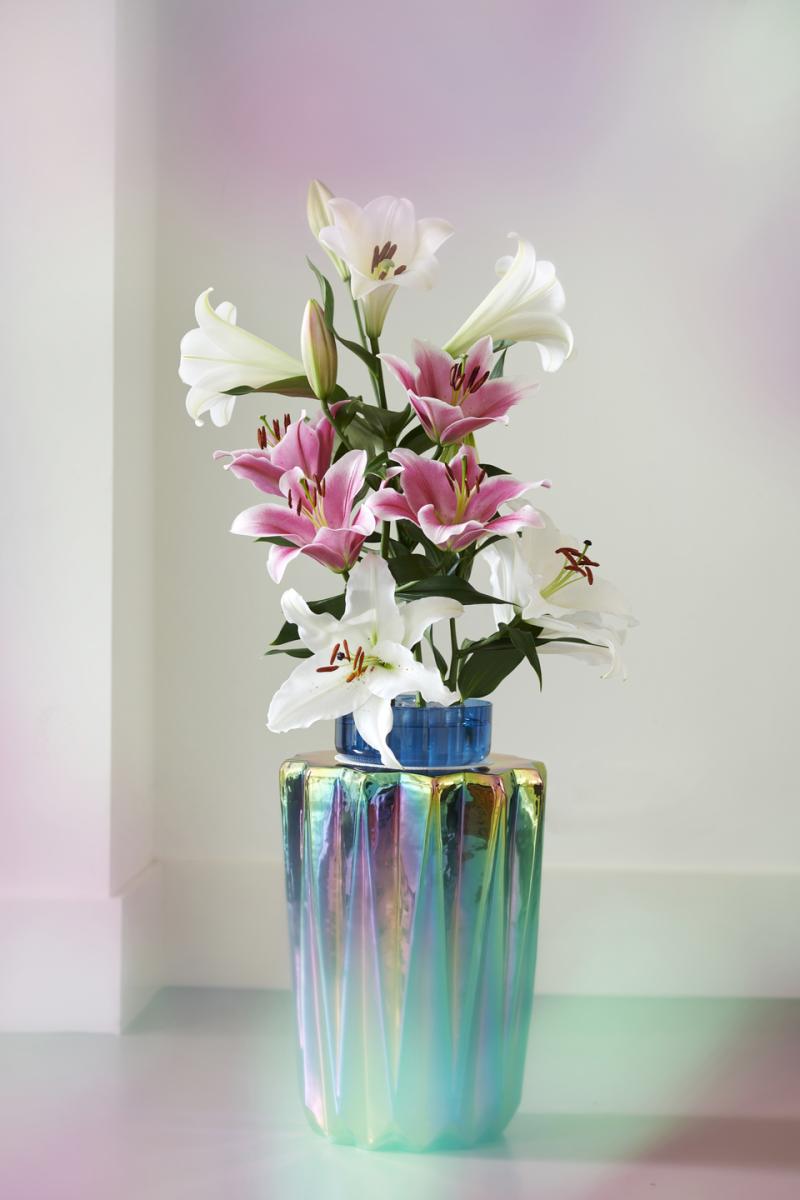Lily is in the June Flower Agenda
Imposing, colourful, versatile - the lily has bags of personality, which makes it an attractive centrepiece and popular cheerleader in bouquets. The flower comes in serene white and calm pink, but also in eye-catching red, yellow, purple and orange. With stripes, fringes or spots if preferred. With flowers that can be both trumpet-shaped or shaped like a bowl, the flowers can reach a diameter of 25 cm, and most smell like an oriental garden on a warm evening.
Energy and balance
The lily has been chosen as the flower of the month for June because it’s available in colours - pink, white, yellow - that fit well with the New Frontiers style trend. Think of smart technology in the home where flowers make a subtle reference nature combined with shiny, clear glass and iridescent materials.
Origin
Lilies are not only varied in terms of colour, shape and size, but also where they come from. You can find them growing wild in Korea, Japan and parts of Siberia, but also close to the equator in India. In Europe the lily is native to the Caucasus, the Balkans, Greece, Poland, the Alps and Pyrenees. It also grows wild in most American states, with the exception of the south-west parts of the United States. So, you can certainly describe the lily as a world traveller!
Range
Bright and soft colours, freckles, flames or spots and a large variety of flower shapes both scented and scentless make the lily range very varied.
• The older generation is the Asiatic Group with plain colours, lots of buds, small flowers, more delicate leaves and stamens that give off pollen.
• The Oriental Group features the most colours in white and pink or bicoloured, has larger buds and flowers, coarser leaves, heavier stems and is strongly scented.
• The most traditional group is the Lilium Loingflorum Group with coarser leaves and a trumpet-shaped flower. Most of the cultivars are white, but there are also red and pink cultivars. Lilies from the Lilium Longiflorum Grp, which means ‘having long flowers’, have a light fragrance and are mainly white.
• Crossing the Longiflorum and Asiatic lily has resulted in the LA Group. These feature pale pastels shades, compact branching, coarser leaves and stamens that give off pollen. The lilies in the cut flower range are crosses of various species.
• A fairly new addition are the double-flowered Oriental lilies that are offered under the name Roselily and are pollen-free. The Lilium Martagon Grp, the Turkish lily, with many small spotted flowers on a stem is also a new addition to the cut flower range.
What to look for when buying lilies
• The length and the number of buds per stem depends on the size of the bulb used by the grower. The larger the bulb, the more buds, the more attractive the lily stem.
• At the time of purchase the flowers must be ripe enough for a hint of colour to be visible; the likelihood of colouring fully and opening is then greatest.
• Some growers leave their lilies to ripen on the plant. They then display better, have more colour and are guaranteed to open, which is handy for weddings and other events.
• Lilies are sometimes affected by botrytis (in the form of spots) or ugly leaf tips; dried buds are also an ominous sign for the lifespan.
Care tips for professionals
• Trim off the end of the lilies’ stems and placed them in cold water with cut flower food. There is special food for lilies that prevents the leaves from yellowing.
• Store lilies in cool conditions, but avoid moisture caused by condensation.
• Lilies can be given a more exclusive look by removing them from the sleeve and displaying them loose in a bucket.
• Lilies look best high on the shelf - the buds then look most impressive.
Display tips for professionals
A modern and appealing way of displaying lilies is to use iridescent vases and bowls, preferably with hints of lilac/pink/yellow. Lilies that cannot be used in bouquets because of an accident do incredibly well as a floating flower in cubes and spheres. It can look a bit like a mad professor is experimenting in a laboratory.
Care tips for customers
• Trim the stems diagonally with a sharp knife.
• Remove the leaves that will be under water.
• Add cut flower food to the water for a longer vase life.
• Do not place the vase in direct sunlight, in a draught or next to the fruit bowl.
• Regularly top the vase up with tap water.
• Pollen stains? Carefully remove them with a piece of Sellotape.
Inspiration & information
Inspiring images of every flower on the Flower Agenda have been produced in line with the Horticulture Sector Trends 2019 (Groenbranche Trends 2019). These trends are a translation of the latest consumer trends and are specifically aimed at the horticulture sector for use both indoors and outdoors. For more information about the Flower Agenda, click here.
Image credits
The lily will be in the Flower Agenda in June 2019. You can download and use these inspirational images free of charge if you credit Funnyhowflowersdothat.co.uk.
Instagram: @howflowersdothat
Facebook: @funnyhowflowersdothat
Twitter: @flowersdothat

